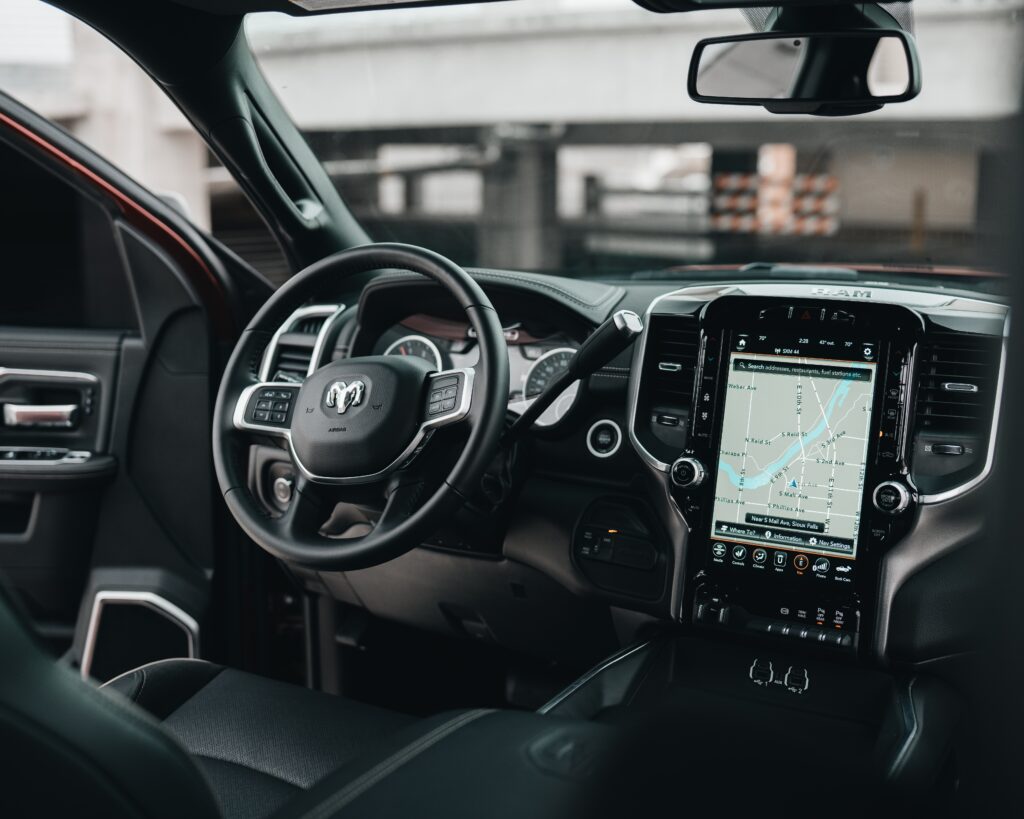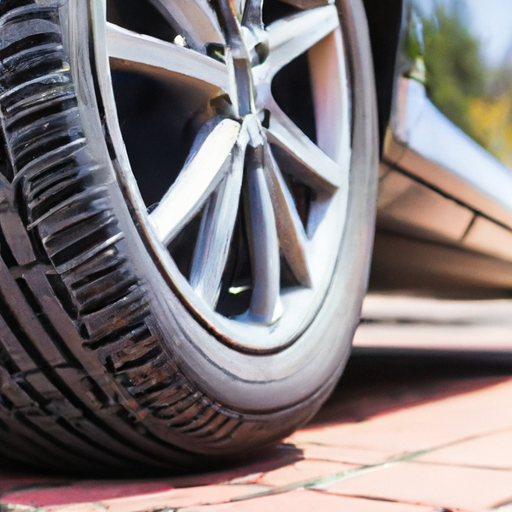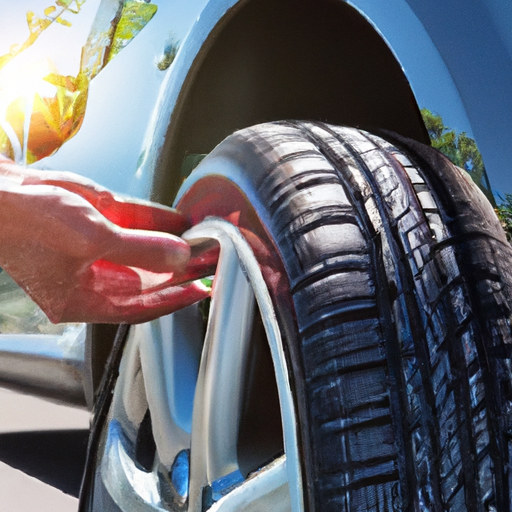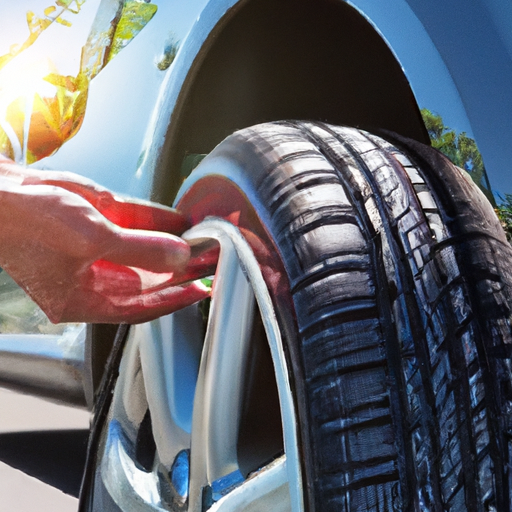Taking proper care of your car wheels is essential not only for their longevity but also for the overall appearance of your vehicle. With regular maintenance and cleaning, you can ensure that your wheels remain in top-notch condition, free from dirt, grime, and brake dust. In this article, you will find some practical tips and techniques to help you effectively maintain and clean your car wheels, allowing them to shine and enhance the appeal of your beloved vehicle. Whether you are a car enthusiast or simply someone who wants their wheels to look spectacular, these tips will guide you towards achieving the desired results. So let’s roll our sleeves up and get ready to give your wheels the TLC they deserve!
Inspecting the Wheels
Before starting the cleaning process, it is crucial to thoroughly inspect your car wheels to identify any potential damage or issues. By inspecting the wheels regularly, you can catch problems early on and prevent further damage. Here are some key areas to check during your inspection:
Checking for Damage
Carefully examine each wheel for any signs of damage, such as cracks, dents, or scratches. These issues can compromise the structural integrity of the wheels and should be addressed promptly. Additionally, check for any bent or misaligned rims, as these can negatively impact the performance of your vehicle.
Examining the Tread
The tread of your car wheels plays a vital role in providing traction and ensuring a safe driving experience. Examine the tread depth using a tread depth gauge or the penny test. If the tread is worn down too much, it is essential to replace the tires to maintain optimal performance and safety.
Inspecting for Loose Bolts
Loose or missing bolts can pose a significant safety hazard and should be addressed immediately. Take the time to inspect each wheel and ensure that all bolts are securely fastened. If you notice any loose or missing bolts, tighten them carefully to the recommended torque specification.
Preparing for Cleaning
Once you have completed the inspection and addressed any issues, it is time to prepare for the cleaning process. By gathering the necessary supplies and choosing the right cleaning products, you can ensure that the cleaning process is efficient and effective.
Gathering the Necessary Supplies
To properly clean your car wheels, you will need a few essential supplies. These include a bucket, a hose or pressure washer, a wheel cleaner, a tire brush, a lug nut brush, microfiber cloths or mitts, a wheel protectant, a wheel polish, and a wax. It is also important to have access to water and a suitable cleaning area.
Choosing the Right Cleaning Products
There is a wide range of cleaning products available for car wheels, but it is essential to choose the right ones for your specific needs. Look for a wheel cleaner that is safe for use on your type of wheels and effectively removes dirt, brake dust, and grime. Additionally, select a wheel protectant, polish, and wax that are suitable for your wheel type and provide the desired level of shine and protection.

Removing Dirt and Debris
Before proceeding with the cleaning process, it is crucial to remove loose dirt and debris from the wheels to prevent scratching or causing further damage.
Rinsing the Wheels
Start by rinsing the wheels with water to remove any loose dirt and debris. Use a hose or a pressure washer with a gentle setting to ensure that the wheels are thoroughly soaked and any loose particles are removed. Pay close attention to hard-to-reach areas, such as the lug nuts and between spokes.
Applying a Wheel Cleaner
Next, apply a generous amount of wheel cleaner to the surface of each wheel. Allow the cleaner to sit for a few minutes, following the manufacturer’s instructions. This will help loosen and break down any stubborn dirt, grime, and brake dust.
Using a Tire Brush
While the wheel cleaner is working its magic, take a tire brush and scrub the tires to remove any embedded dirt. Apply some pressure and work the brush in circular motions to effectively clean the rubber surface. This step ensures that the tires not only look clean but also retain their longevity.
Cleaning Brake Dust
Brake dust can accumulate on your car wheels and cause damage if left unaddressed. Take a lug nut brush or a soft-bristled brush and carefully clean the areas around the lug nuts. This will help remove brake dust and prevent it from corroding the wheel surface.
Scrubbing and Cleaning
Now that the initial dirt and debris have been removed, it is time to focus on thoroughly scrubbing and cleaning the wheels.
Scrubbing the Wheels
Using a wheel brush or a soft-bristled brush, scrub each wheel thoroughly. Work in small sections, paying attention to the spokes, edges, and crevices. Apply enough pressure to remove stubborn dirt, but be cautious not to scratch the wheel surface. For hard-to-reach areas, consider using a detailing brush or a toothbrush.
Cleaning the Lug Nuts
As you clean the wheels, don’t forget to pay attention to the lug nuts. These small components play a crucial role in securing the wheels to the hubs. Take a lug nut brush or a soft-bristled brush and clean each lug nut carefully. Ensuring that the lug nuts are free from dirt and debris will help maintain their functionality and prevent rusting.
Dealing with Stubborn Stains
If you encounter stubborn stains or stuck-on grime during the cleaning process, don’t worry. There are several techniques you can try to address these issues. One option is to use a wheel cleaner specifically formulated for removing stubborn stains. Alternatively, you can create a paste using baking soda and water and gently scrub the affected areas. This method is effective yet gentle enough not to damage the wheel surface.

Treating and Protecting
Once the wheels are thoroughly cleaned, it is crucial to treat and protect them to maintain their appearance and extend their lifespan.
Applying Wheel Protectant
To protect your wheels from dirt, brake dust, and harmful UV rays, apply a wheel protectant. This product forms a barrier on the wheel surface, making it easier to clean in the future and preventing damage caused by environmental factors. Follow the manufacturer’s instructions and apply the protectant to each wheel evenly.
Polishing the Wheels
If you desire a high-shine finish, consider using a wheel polish. This step is especially beneficial for chrome, alloy, or painted wheels. Apply a small amount of polish onto a microfiber cloth and gently rub it onto the wheel surface. Work one section at a time and buff the polish using a clean cloth to achieve a glossy finish.
Adding a Layer of Wax
For an extra layer of protection and shine, consider applying a wax specifically formulated for wheels. Wax helps repel water and contaminants, making it easier to maintain clean wheels in the future. Apply a thin layer of wax to each wheel, following the product instructions. Allow the wax to dry and then buff it off with a clean, soft cloth.
Maintaining the Wheels
Once your car wheels are clean and protected, it is essential to establish a regular cleaning schedule and follow some maintenance practices to ensure their longevity.
Regular Cleaning Schedule
Creating a regular cleaning schedule for your car wheels will help maintain their appearance and prevent the build-up of dirt and grime. Depending on your driving conditions, aim to clean your wheels at least once a month, or more frequently if necessary. Regular cleaning will also make the process quicker and easier each time.
Avoiding Harsh Chemicals
While it is important to use suitable cleaning products, it is equally crucial to avoid using harsh chemicals that can damage the wheel surface. Avoid products containing acids, solvents, or abrasive ingredients, as these can degrade the protective coatings and cause long-term damage to the wheels.
Protecting Against Corrosion
To prevent corrosion and rust from forming on your wheels, it is important to keep them clean and dry. After washing your car or driving in wet conditions, use a clean cloth to dry the wheels thoroughly. This extra step will help maintain the wheels’ appearance and prevent costly repairs in the future.
Inspecting for Signs of Wear
Regularly inspect your car wheels for any signs of wear, such as peeling paint, cracks, or corrosion. Catching these issues early on allows you to address them promptly and prevent further damage. If you notice any significant wear or damage, consult a professional for guidance or consider replacing the wheels if necessary.

Addressing Specific Wheel Types
Different types of car wheels require specific cleaning and maintenance techniques. Here are some key considerations for various wheel types:
Alloy Wheels
Alloy wheels are commonly found on modern vehicles and require regular cleaning to maintain their appearance. Avoid using abrasive brushes or harsh chemicals that can damage the protective coatings on alloy wheels. Instead, opt for a pH-neutral wheel cleaner and a soft-bristled brush to clean the surface effectively.
Chrome Wheels
To keep chrome wheels looking shiny and pristine, regular cleaning and proper maintenance are essential. Avoid using abrasive cleaners or brushes that can scratch the delicate chrome finish. Instead, opt for a specialized chrome cleaner and a soft cloth to gently remove dirt and grime.
Painted Wheels
Painted wheels need to be treated with care to maintain their color and finish. Avoid using abrasive cleaning tools or harsh chemicals that can damage the paint. Instead, opt for a mild soap and water solution and a soft cloth or sponge to clean the painted surfaces. Consider applying a layer of wax or paint sealant to protect the paint and enhance its longevity.
Wire Wheels
Wire wheels require special attention during the cleaning process to prevent damage to the delicate spokes. Use a wheel brush with soft bristles to clean the surface, paying close attention to the spokes. Avoid applying excessive pressure that can bend or damage the wire spokes. Consider using a specialized wire wheel cleaner to effectively remove dirt and brake dust.
Safety Precautions
Keeping safety in mind while cleaning and maintaining your car wheels is crucial to prevent accidents or injuries. Here are some essential safety precautions to consider:
Using Protective Gloves
When handling cleaning products or working with potentially harmful substances, it is important to wear protective gloves. Gloves not only protect your skin from chemical irritation but also provide a better grip and prevent injuries.
Working in a Well-Ventilated Area
Many cleaning products contain strong chemicals that can release harmful fumes. It is important to work in a well-ventilated area to prevent exposure to these fumes. Open your garage door or work outside if possible. If working indoors, use fans or open windows to ensure proper ventilation.
Avoiding Excessive Pressure or Force
While it may be tempting to apply excessive pressure or force when scrubbing your wheels, doing so can lead to damage. Use a gentle yet firm touch to avoid scratching the wheel surface or causing dents. Let the cleaning products and appropriate tools do the work for you.

Troubleshooting Common Issues
Even with regular maintenance, issues may arise with your car wheels that require attention. Here are some common issues and how to address them:
Removing Rust
If you notice rust forming on your wheels, it is essential to remove it promptly to prevent further damage. Use a gentle rust remover specifically formulated for wheels and a soft cloth or brush to gently scrub the affected areas. Follow the product instructions and rinse thoroughly to remove any residue.
Fixing Curb Rash
Curb rash refers to the scratches or scuffs that can occur when your wheels come into contact with curbs or other obstacles. Depending on the severity of the curb rash, you may be able to fix it yourself or consult a professional wheel repair service. Minor curb rash can often be addressed using a touch-up paint kit or a specialized wheel repair kit.
Dealing with Pitting
Pitting refers to small holes or craters that can occur on the wheel surface, often due to road salt, brake dust, or harsh environmental conditions. Pitting can be challenging to fix without professional assistance, as it often requires refinishing or repainting the affected areas. Consult a professional wheel repair service for the best course of action.
Restoring Brake Dust Covers
Brake dust covers help protect your wheels from the harmful effects of brake dust. Over time, these covers can become worn or damaged. If you notice any issues with your brake dust covers, consult a professional for guidance or consider replacing them.
Seeking Professional Help
While cleaning and maintaining your car wheels can be a DIY task, there are instances where it is best to seek professional help. Here are some scenarios where consulting a professional wheel service provider is advisable:
When to Consult a Professional
If you encounter significant damage, such as bent or misaligned wheels, it is best to consult a professional wheel repair service. They have the expertise and specialized equipment to identify and address such issues effectively. Similarly, if you are unsure about the appropriate cleaning techniques or if your wheels require extensive repair, professional assistance is recommended.
Choosing a Reliable Wheel Service Provider
When selecting a wheel service provider, it is important to choose a reputable and reliable establishment. Look for professionals who have experience working with your type of wheels and who can provide references or testimonials from satisfied customers. Additionally, consider reading online reviews or seeking recommendations from friends or family to ensure you choose a reputable service provider.
By following these comprehensive guidelines for maintaining and cleaning your car wheels, you can enjoy a pristine and safe driving experience. Regular inspections, careful cleaning techniques, and proper maintenance will help your wheels maintain their appearance and functionality for years to come. Remember to prioritize safety, use the right tools and products, and seek professional help when needed. With a little effort and attention to detail, your car wheels will continue to shine and impress on the road.


